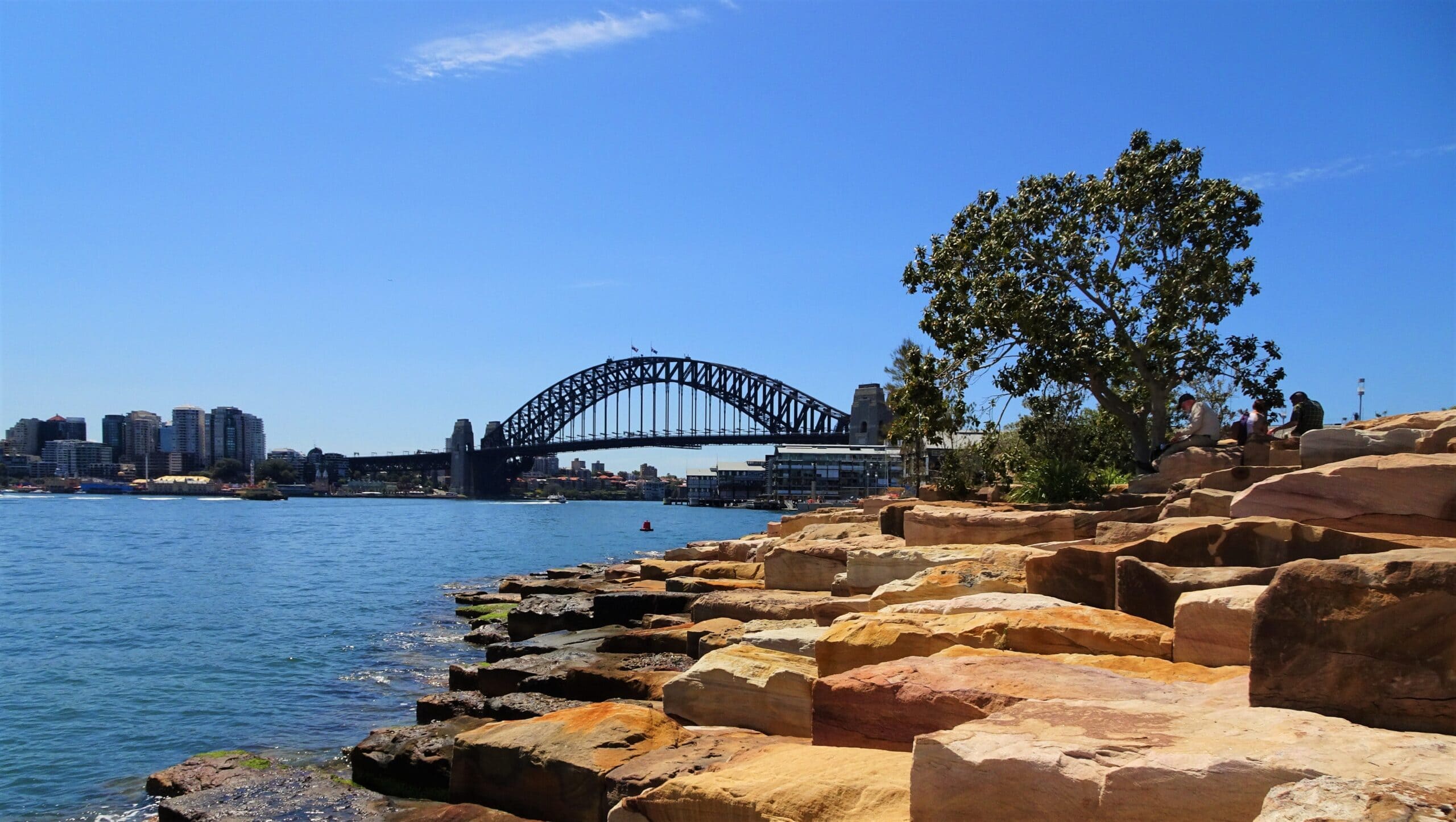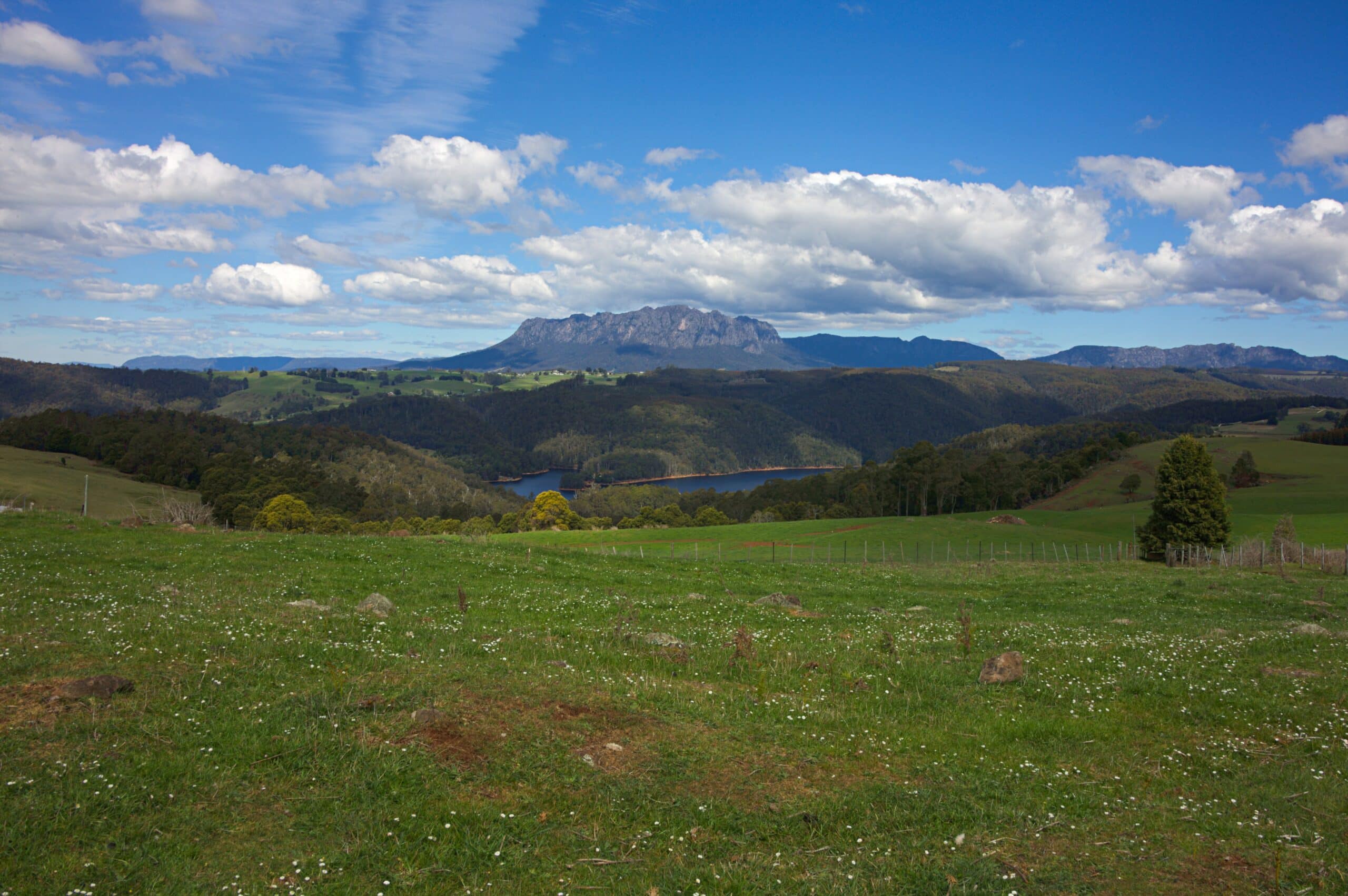9 Coldest Cities In Australia – 2025 Update
-
Codee Chessher
- Last updated:

It may seem like Australia is a hot country, and most people think of the Outback when you mention it. However, Australia is a very diverse country, with many areas rivaling European countries for the coldest temperatures. Let’s check out what some of the coldest cities in Australia are and a little about what makes them tick.
The 9 Coldest Cities In Australia: Quick List
- Liawenee, Tasmania
- Lithgow, New South Wales
- Hobart, Tasmania
- Collinsvale, Tasmania
- Canberra, Australia Capital Territory
- Orange, New South Wales
- Launceston, Tasmania
- Miena, Tasmania
- Jindabyne, New South Wales
A Closer Look At The 9 Coldest Cities In Australia
1. Liawenee, Tasmania

| Average temperature: | 50.3ºF/10.2ºC |
| Hottest Month: | January |
| Coldest Month: | July |
| Coldest Temperature Recorded: | 2ºC/6.4°F on August 7, 2020 |
Liawenee is the coldest permanently inhabited town in Australia, with just two permanent residents: a police officer and a fishery worker. During the more temperate summer, Liawenee’s Great Lake is known as an awesome fishing spot in the heart of Tasmania, where it hosts many would-be fishing champs.
2. Lithgow, New South Wales

| Average temperature: | 40ºF/12.2ºC |
| Hottest Month: | January |
| Coldest Month: | July |
| Coldest Temperature Recorded: | -3.2ºC/26.2°F on April 30, 2008 |
Lithgow is located just west of the gorgeous, picturesque Blue Mountains and is a famous historic mining town. The scenery is to die for, and you’ll find no lack of historical and scenic attractions in and around the town. You may want to go in the summer because it gets quite cold in the winter!
3. Hobart, Tasmania

| Average temperature: | 54.5ºF/12.5ºC |
| Hottest Month: | January |
| Coldest Month: | July |
| Coldest Temperature Recorded: | -2.8ºC/27°F on June 25, 1972 |
Hobart is notable for being the capital of Tasmania and the first Australian city to have a casino, which opened in 1973. It’s also home to the world-famous Museum of Old and New Art (MONA). Hobart also has a storied seafaring tradition thanks to its deep-water harbor. Although it gets quite cold, snow rarely settles on the town; it mainly falls on nearby Mount Wellington.
4. Collinsvale, Tasmania

| Average temperature: | 56ºF/13.4ºC |
| Hottest Month: | January |
| Coldest Month: | July |
| Coldest Temperature Recorded: | 0.7ºC/33.2°F on April 4, 1888 |
Collinsvale is another Tasmanian city with some of the cleanest air in the whole world. Its heyday as a mining town is far in the past, and these days it’s a more relaxed and sleepy town. Although it rarely gets snow, Collinsvale remains cool throughout the year and has recently seen several snowy cold snaps.
5. Canberra, ACT

| Average temperature: | 58ºF/14.4ºC |
| Hottest Month: | January |
| Coldest Month: | July |
| Coldest Temperature Recorded: | -3.7ºC/25.3°F on April 25, 1999 |
This capital city is much colder than the other most populous cities across the country because it’s 600 meters above sea level. In fact, many people believe that Canberra was chosen as the capital because it’s so cool, plus it’s inland enough that enemy navies can’t bombard it from the coast. The most popular event in town is the yearly Floriade spring celebration.
6. Orange, New South Wales

| Average temperature: | 55ºF/12.7ºC |
| Hottest Month: | January |
| Coldest Month: | July |
| Coldest Temperature Recorded: | -1.6ºC/29.1°F on April 23, 2006 |
Orange is mainly known as a vineyard hotspot that produces some of Australia’s finest wines, and the dining nearby is accordingly posh. Surprisingly, Orange’s past is firmly rooted in the mining industry. Orange enjoys temperate summers, but the winters get very cold and wet. The main reason Orange is so cool is that it gets lots of westerly wind exposure.
7. Launceston, Tasmania

| Average temperature: | 55.4ºF/13ºC |
| Hottest Month: | January |
| Coldest Month: | July |
| Coldest Temperature Recorded: | -1.5ºC/29.3°F on April 26, 1981 |
Launceston is the second-largest city in Tasmania and has traded in a city feel for a more rural and country atmosphere. The village is loaded with boutiques, spas, clothing stores, and other essential shopping destinations. If you’re in the mood for scenery, there are tons of historical attractions to visit from the city’s 1800s past. Launceston owes its cool climate to being in a valley surrounded by mountains.
8. Miena, Tasmania

| Average temperature: | 7ºC/44.6ºF |
| Hottest Month: | January |
| Coldest Month: | July |
| Coldest Temperature Recorded: | -7.7ºC/18.1°F on April 21, 2001 |
Not far from Liawenee is Miena, situated in the middle of Tasmania’s central highland. The city and its neighbors are hot tourist destinations during the fishing season because of the region’s Great Lake, which is one of the country’s largest freshwater lakes. Some people claim that the rainwater in Tasmania’s highlands is the purest on Earth thanks to numerous springs.
9. Jindabyne, New South Wales

| Average temperature: | 11ºC/51.8ºF |
| Hottest Month: | January |
| Coldest Month: | July |
| Coldest Temperature Recorded: | -8.4ºC/16.9°F on April 25, 1999 |
Named after the lake it overlooks, Jindabyne is a huge snow sports destination in Australia. Jindabyne acts as a ski town for nearby ski spots, like the famous Thredbo and Perisher. If skiing isn’t your thing, you could always go out for a day of fishing on the crystal clear lake in town. Like most of New South Wales, Jindabyne has hot, dry summers and cold, wet winters.
Frequently Asked Questions
Why Are Australia’s Seasons Reversed?
Australia’s seasons are the opposite of seasons in the U.S., Europe, and Asia because the country lies in the southern hemisphere. At the end of the year, when the northern hemisphere gets cold and experiences its winter, the sun is pointed directly at Australia in the southern hemisphere. Many tourists are surprised to visit and find out that Christmas is actually a beach holiday!
On the flip side, Australia experiences winter in the middle of the year. Most of the country doesn’t deviate much in terms of the temperature, but the notable exceptions are the country’s rocky alpine regions and other high-altitude regions. Another major difference between Australian seasons is that seasons start at the beginning of the month, as opposed to seasons in the northern hemisphere, starting at the middle or end of the month.
Australia is a big country with diverse topography, and some areas near each other can have drastically different climates. Don’t be surprised if you start your trip somewhere very hot and it suddenly becomes cold just a couple of hours away.
What Is The Coldest Region In Australia?
The coldest region is the Snowy Mountains, which is Australia’s tallest mountain range. As the name implies, the Snowies get tons of snow each year. For this reason, a big ski industry is based in the area. All four New South Wales ski resorts are in the Snowies.
Conclusion
Australia is a huge country with wildly diverse geography and weather patterns. While many areas are temperate, others range from alpine and subpolar all the way to subtropical areas. You might think of Australia as a desert destination, but many locations get extremely cold, so pack your winter boots and swimsuit if you’re heading down under.
Featured Image Credit: Broesis, Pixabay
Contents
